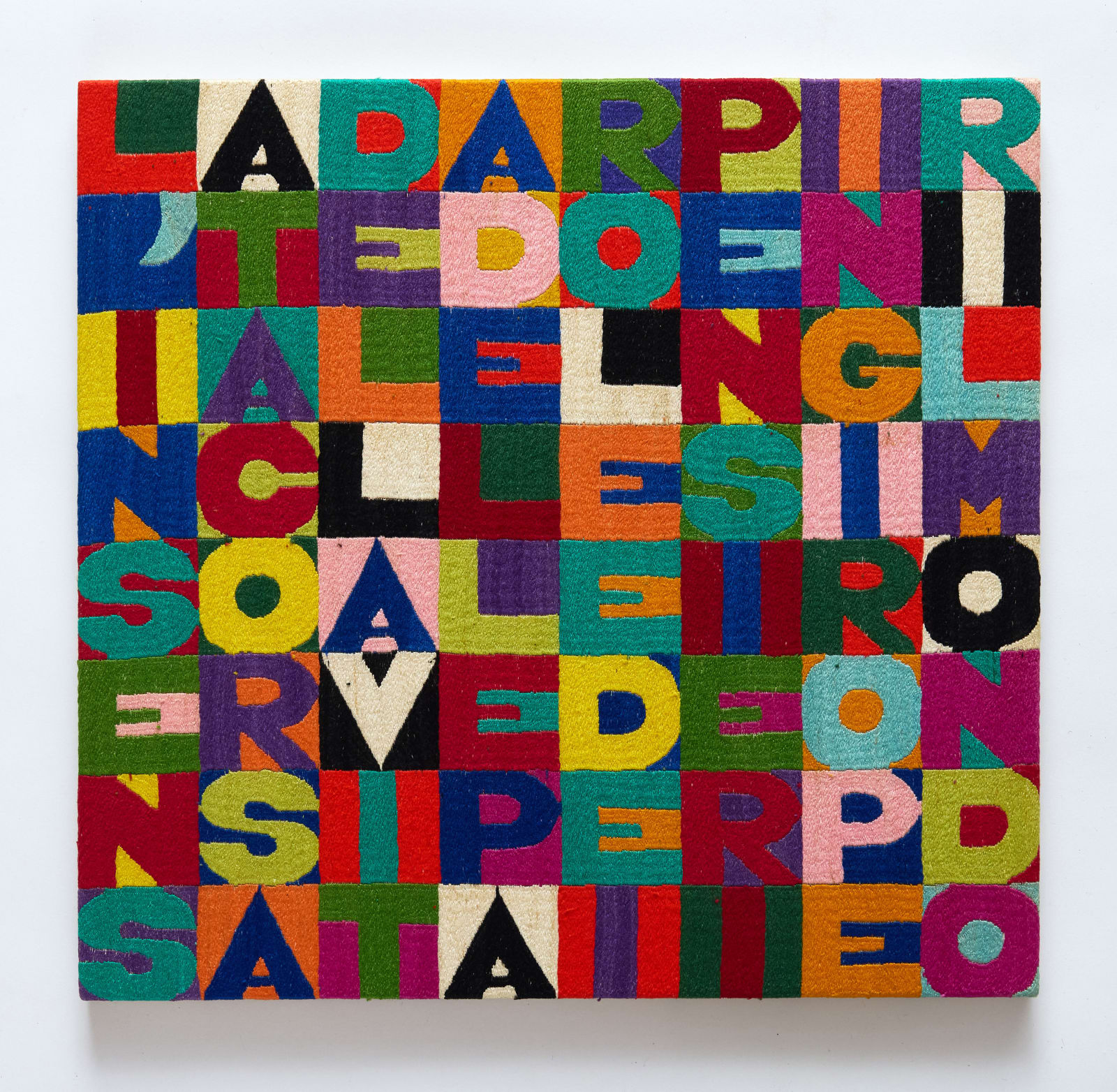
Alighiero Boetti Italian, 1940-1994
L'Insensata Corsa della Vita delle Parole e dei Pensieri in Giro per il Mondo, 1989
Embroidery
35.5 x 37.2 cm. (14 x 14 5/8 in.)
Copyright The Artist
Further images
Alighiero Boetti’s L’Insensata Corsa della Vita delle Parole e dei Pensieri in Giro per il Mondo (1989) is a striking example of his celebrated Arazzi – vividly embroidered grids of...
Alighiero Boetti’s L’Insensata Corsa della Vita delle Parole e dei Pensieri in Giro per il Mondo (1989) is a striking example of his celebrated Arazzi – vividly embroidered grids of letters that conceal phrases for the viewer to decipher. The present work carries one of the longest and most elaborate titles in the Arazzi series. Translated as “The Senseless Race of the Life of Words and Thoughts around the World,” the phrase captures Boetti’s fascination with the ceaseless circulation of language and ideas, untethered from fixed meaning.
The Arazzi project, begun in Kabul, Afghanistan, in 1971, was by this point well established in Peshawar, Pakistan, where displaced Afghan embroiderers executed Boetti’s designs following the Soviet invasion of 1979. The inscription on the reverse of this work – “Peshawar by Afghan people, 1989” – testifies to the collaborative nature of the series. The phrase’s restless energy is heightened by the multicoloured squares and letters, which animate the text and mimic the unpredictable flux of words as they move across borders.
This work exemplifies the way the Arazzi serve not only as visual puzzles but as meditations on communication itself. The rigid grid both contains and destabilises the text, echoing Boetti’s broader exploration of dualities: order/disorder, sense/nonsense, control/chance. In L’Insensata Corsa..., the title becomes almost performative – the words themselves seem to race through the viewer’s eyes, embodying the very “insensata corsa” they describe.
The Arazzi project, begun in Kabul, Afghanistan, in 1971, was by this point well established in Peshawar, Pakistan, where displaced Afghan embroiderers executed Boetti’s designs following the Soviet invasion of 1979. The inscription on the reverse of this work – “Peshawar by Afghan people, 1989” – testifies to the collaborative nature of the series. The phrase’s restless energy is heightened by the multicoloured squares and letters, which animate the text and mimic the unpredictable flux of words as they move across borders.
This work exemplifies the way the Arazzi serve not only as visual puzzles but as meditations on communication itself. The rigid grid both contains and destabilises the text, echoing Boetti’s broader exploration of dualities: order/disorder, sense/nonsense, control/chance. In L’Insensata Corsa..., the title becomes almost performative – the words themselves seem to race through the viewer’s eyes, embodying the very “insensata corsa” they describe.
